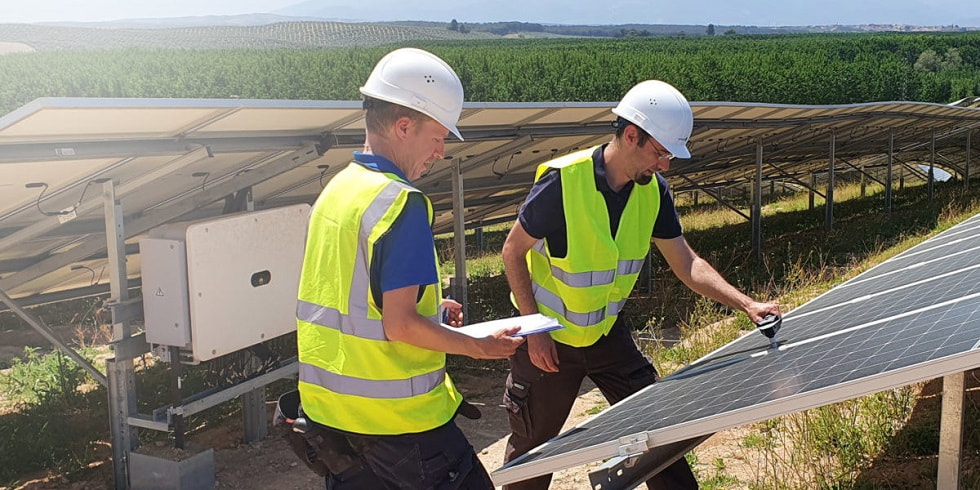
As heat waves become increasingly frequent, people are starting to ask whether PV systems can cope with such high temperatures.
Inverter failure
If an inverter becomes too hot, it usually switches itself off or reduces its power to such an extent that the higher ambient temperature does not harm it. This is known as temperature derating.
The number of possible causes further reduces the percentage of weather-related factors. Analyzing the data pool confirms the empirical value that inverters can generally withstand periods of heat, if the installation site is suitable. Further proof of the heat resistance of inverters is the fact that PV systems operate successfully in southern Europe and even in desert regions. However, overheating reports should nonetheless be taken seriously to ensure that yield is not lost and that the life of the equipment is not shortened.
Does the module efficiency drop significantly during heat waves? A temperature rise of 3 C lowers the efficiency of solar panels by an average of 1%. As a result, the efficiency of the modules is several percent lower during the summer than in wintertime, although solar radiation is times higher in the summer. Accordingly, the losses from reduced efficiency are more than offset by the additional yield. Sunny heat waves are positive on the yield side.
Operational considerations
If an inverter fails due to heat, first check the ventilation on site. For instance, provision will have to be made for shading if an inspection determines that an inverter has no shading.
Power losses due to temperature derating are more difficult to detect if the inverter reduces its power due to the heat. Lower performance is harder to determine by monitoring if the yield is below the target level. Temperature derating can be clearly diagnosed by analysing output characteristics.
Existing damage to the cells of solar panel is exacerbated at high temperatures. Accordingly, preventative measures become more relevant as the temperature increases, as they could prevent shading due to growth on the surface or dirty modules at an early stage. Thermal imaging is able to detect spot shading, hot spots or micro-fractures.
Heat waves are associated with drought. This creates more dust at some sites, which can then accumulate on the modules. Module self-cleaning also decreases with the absence of rain. The need to clean modules could increase in Germany to the current level in Spain. Some 2% to 3% of energy is lost due to dirt, which is why operators clean their modules once or twice a year. In most cases, natural rain is still enough to clean modules in Germany, as only about 1% of the energy is lost.
Solar systems can still be operated reliably, even amid heat waves, with careful system planning, proper installation, and professional maintenance. Inspection monitoring processes should include heat-related sources of failure. However, if heat-related failures occur, the cause needs to be quickly identified and rectified to avoid lower yields, as well as technical damage.
Tags :
